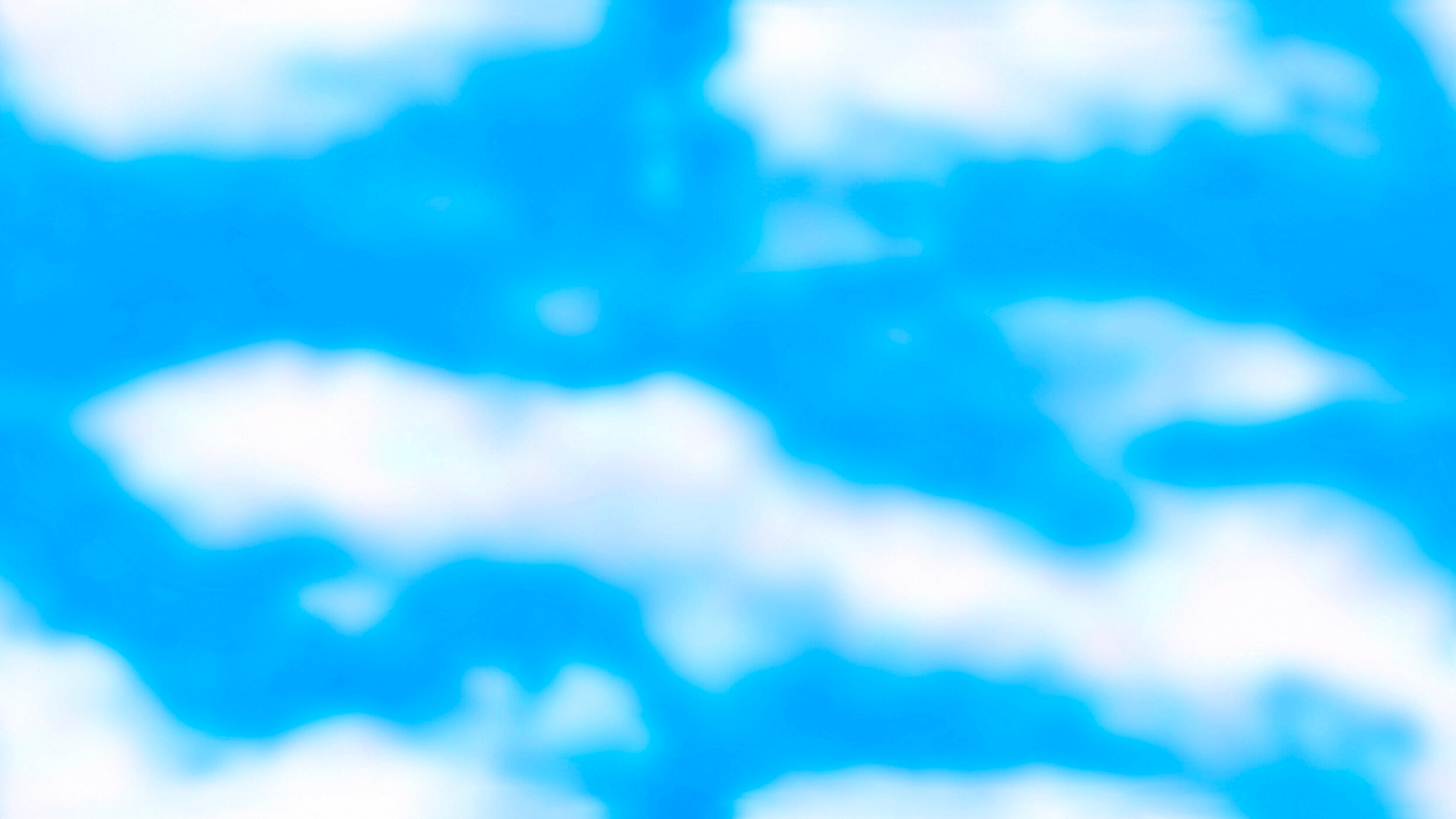Contour Biennale 8
Polyphonic Worlds: Justice as Medium
Polyphonic Worlds: Justice as Medium evolves in drawing relations between contemporary artistic practice and the course of social justice against the 400-year old juridical past of Mechelen’s Great Council—Europe’s first courthouse. From the vestiges of this judicial infrastructure, what might it mean to survey the field of social justice and its implements as media archaeology such that justice itself is considered a “medium” that is simultaneously a performative, ethical and aesthetic operation.
With the limits of justice now unraveling in a volatile crisis of ethics in the global present, Contour Biennale 8 engages a polyphonic view that recalls the acoustic history of the Lowlands while presenting a notational landscape that is multiphonic, carrying overtones that are heard as a plural consciousness, and at times as states of discord. This biennial sets out to question the preconceived boundaries between the perception of legality and illegality within today’s experience of statehood.
Curator: Natasha Ginwala
Advisers: Judy Radul and Denise Ferreira da Silva
Exhibition Architect: Richard Venlet
Assistant Curator: Krisztina Hunya
Artists and collectives: Adelita Husni-Bey, Agency, Ana Torfs, Arvo Leo, Basir Mahmood, Beatriz Santiago Muñoz, Cooking Sections, Council, Eric Baudelaire, Filipa César and Louis Henderson, Ho Tzu Nyen, inhabitants, Judy Radul, Karrabing Film Collective, Lawrence Abu Hamdan, Madonna Staunton, Otobong Nkanga, Pallavi Paul, Pedro Gómez-Egaña, Rana Hamadeh, Ritu Sarin and Tenzing Sonam, Rossella Biscotti, Susanne M. Winterling, Trevor Paglen, Trinh Thi Nguyen
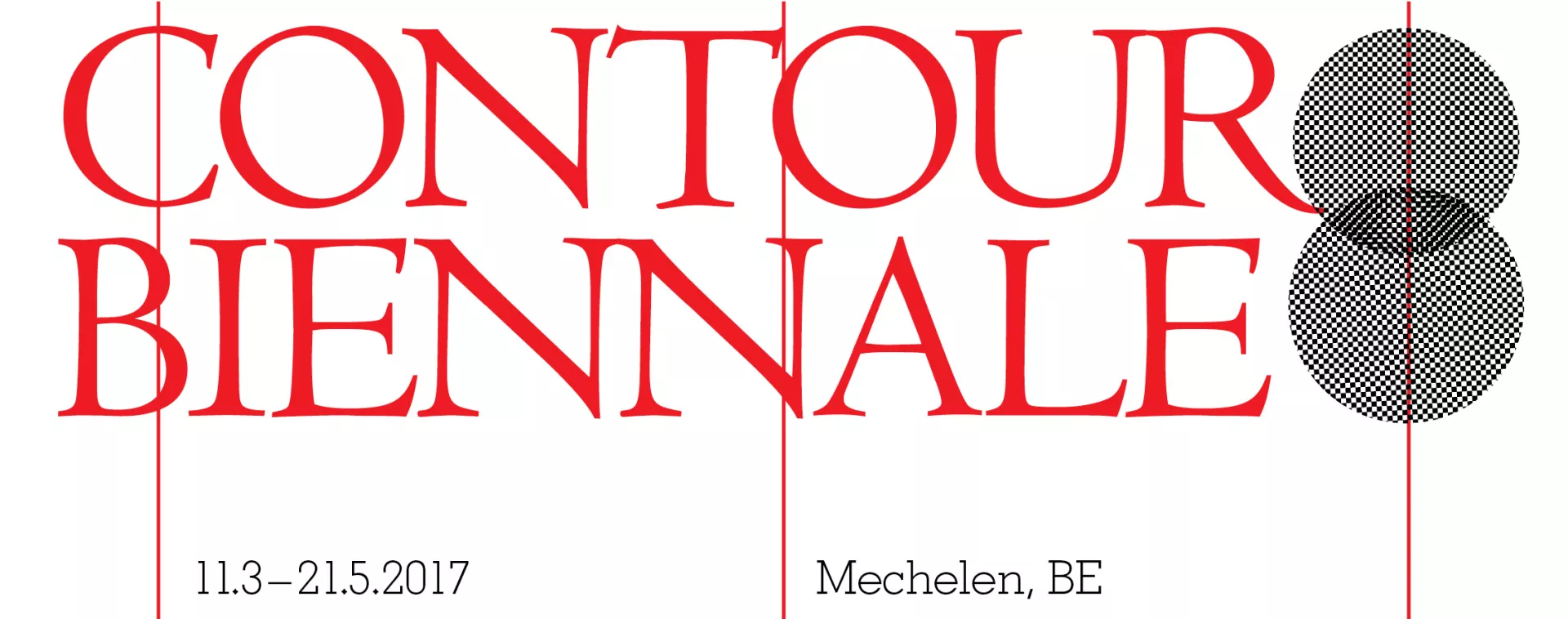
LOCATIONS
DE GARAGE
The Garage, a contemporary arts center near St. Rumbold’s Cathedral, is a key venue for Contour Biennale 8. Originally a guesthouse, butcher’s shop, brasserie, and parking lot, it now hosts contemporary art exhibitions and plays a central role in the annual program of Kunsthal Mechelen
ARTISTS & WORKS
Rossella Biscotti’s Other project examines the ways in which census data shapes social categories and individual identities. By reworking demographic information from Brussels’ population census, she critiques how social institutions define and categorize people, particularly those who fall outside conventional family structures. Biscotti translates this data into woven textiles, with variations in density representing different population clusters. Through this visual representation, she explores the interplay between institutional power and personal narratives, challenging how social structures determine identity and questioning the margins where individuals are often overlooked or misclassified.


Council, co-founded by Grégory Castéra and Sandra Terdjman, challenges societal norms by investigating the intersection of human rights, laws, and nature. Their inquiry The Manufacturing of Rights critiques legal frameworks that criminalize sexual orientation and gender identity, particularly in Lebanon, India, and Kenya. The launch of The Against Nature Journal addresses the conceptualization of “nature” within these laws, questioning its role in defining cultural and legal boundaries. The journal combines art, science, and civil society to provoke conversations around identity, the law, and the broader implications of societal control.
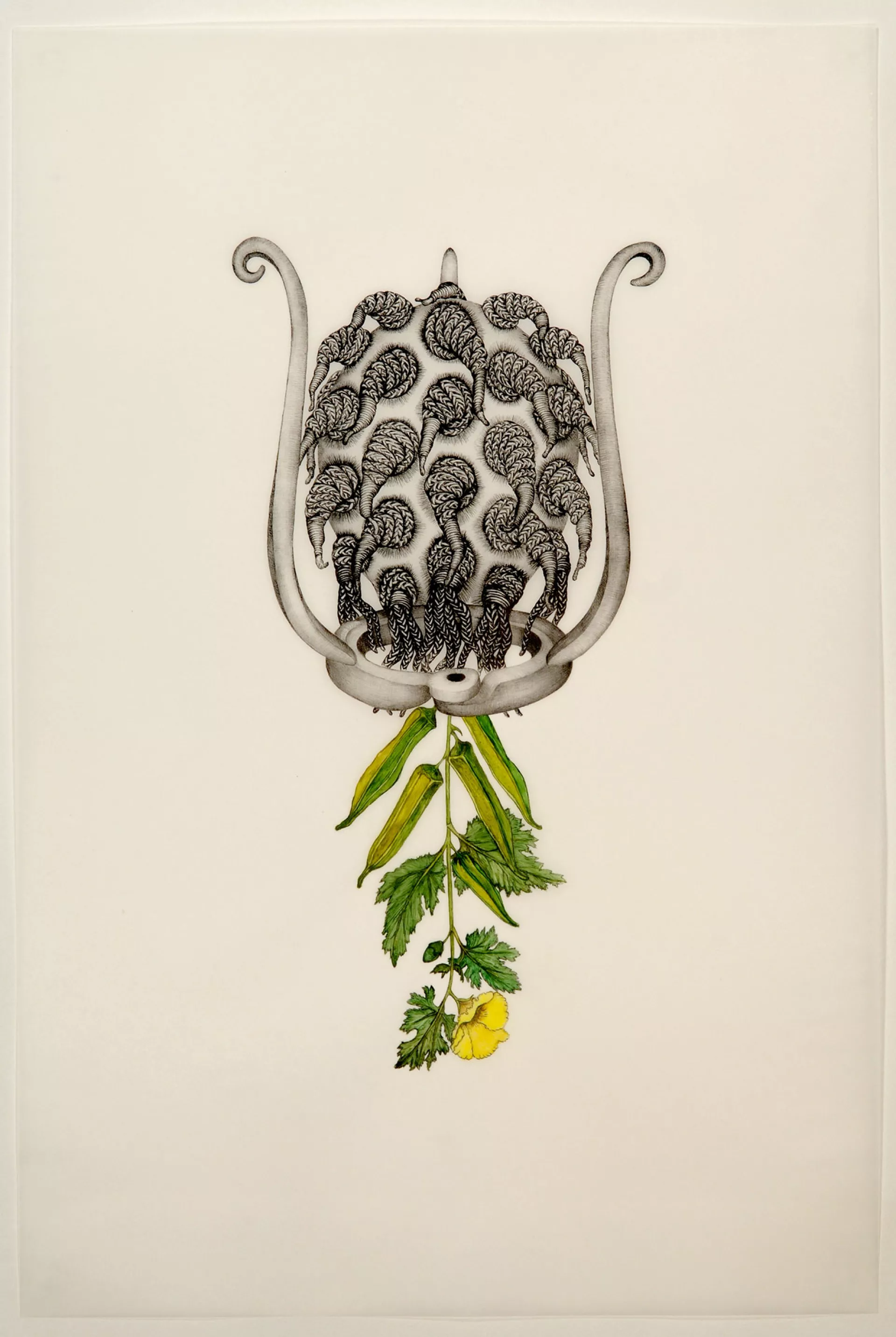
inhabitants is an online platform that combines activism, speculative fiction, and documentary to address the systemic challenges of the Anthropocene. Since 2015, the channel has produced a range of video projects focusing on topics such as oil extraction, geoengineering, and environmental degradation. Collaborating with various institutions, inhabitants has investigated the intersections of art, science, and activism through short-form videos distributed online. For Contour Biennale 8, inhabitants introduced a series on social justice, curating stories that examine embodiment, personhood, and rights, while fostering conversations around contemporary political struggles and collective action.

Arvo Leo’s artistic practice reflects on accidental creation and the unexpected intersections of nature, technology, and time. After a 2003 forest fire in Canada, a molten Ford Mustang transmission formed a sculpture inside an anthill. Leo's silkscreen poster commemorates this phenomenon, speculating on whether non-human elements, like the car or the ants, played a role in its creation. For Contour Biennale 8, Leo’s video work brought these reflections to life, using subterranean spaces to convey the strange convergence of forces that led to this peculiar sculpture, expanding on the tension between the natural and the man-made.
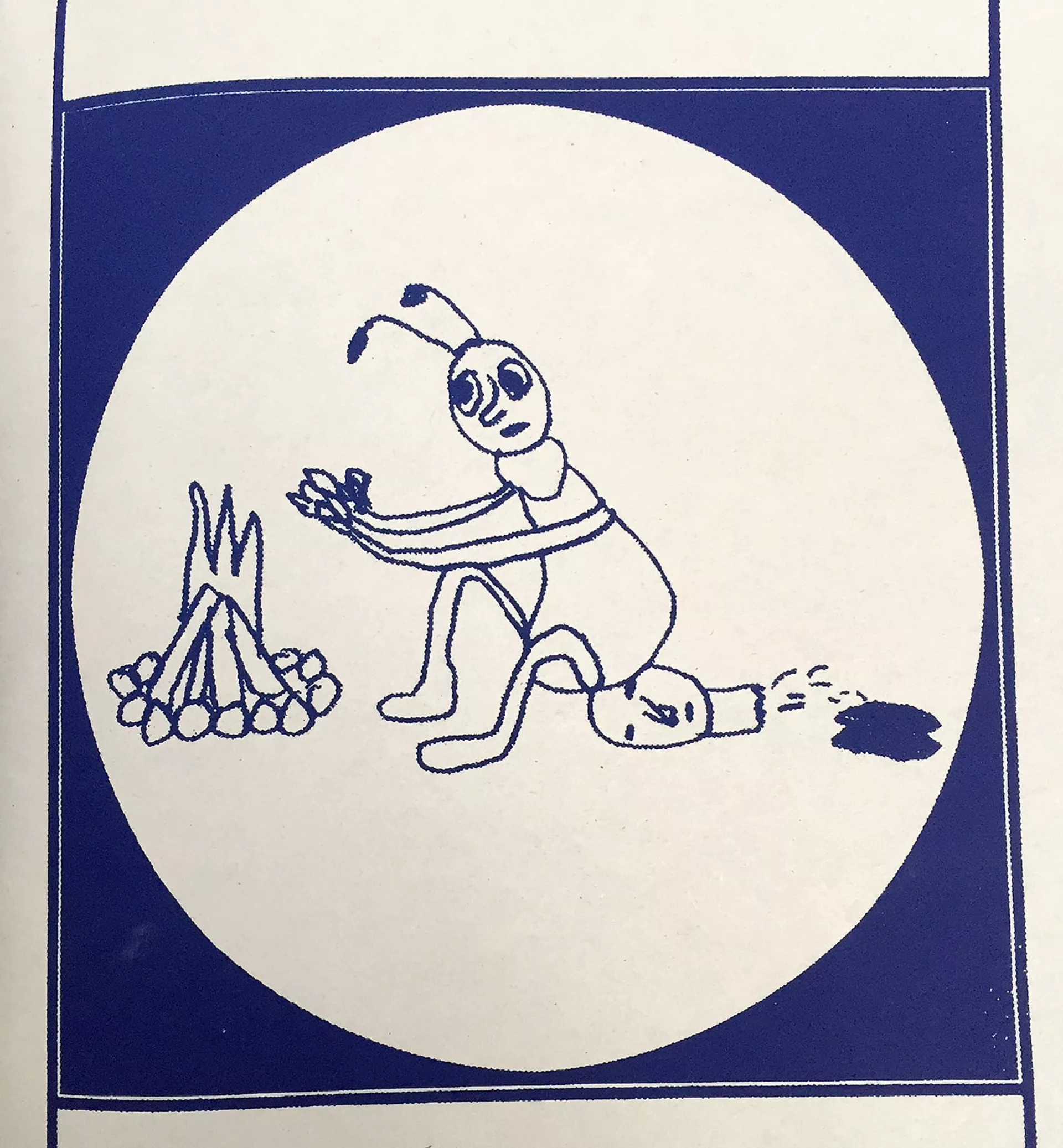
Trevor Paglen’s work investigates the hidden aspects of government surveillance and state secrecy. By using technologies such as satellite imagery and undersea cables, Paglen examines the extensive reach of intelligence agencies and military programs. His ongoing project, Code Names, presents a lexicon of classified terms, revealing the vast network of covert operations. Paglen’s video series Limit Telephotography/Janet Video uncovers secret military sites, using high-powered telescopes to observe distant, otherwise invisible locations. Through his work, Paglen unveils the architecture of surveillance, challenging viewers to reconsider the systems that monitor and control civilian lives.

Beatriz Santiago Muñoz’s films intertwine mysticism, ecological destruction, and the politics of Puerto Rico. In Black Beach/Horse/Camp/The Dead/Forces, the artist captures the eroding beach in Vieques, a site scarred by military occupation. Through an intuitive approach, she documents a landscape where death, spirituality, and resistance converge. In Matrulla, Muñoz reflects on the visionary experiences of Pablo Díaz Cuadrado, blending his perceptions of the future with the physical landscape. The films invite viewers to engage with the people and places within them, while considering their role in larger, ongoing struggles.
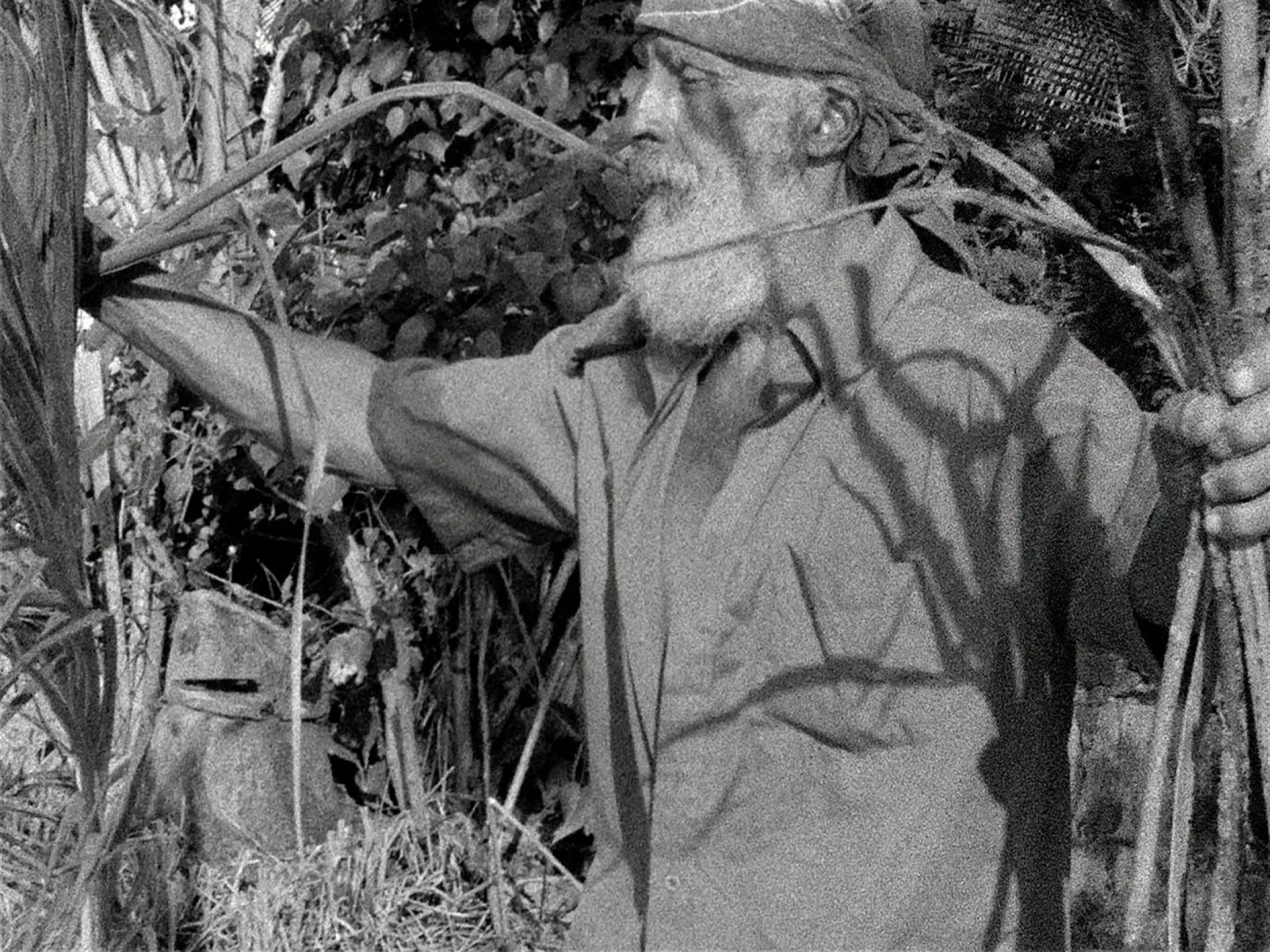
Ritu Sarin and Tenzing Sonam’s body of work centers on Tibet’s ongoing struggle for autonomy and the political acts that define its resistance. In Burning Against the Dying of the Light, they investigate the radical practice of self-immolation, contextualizing these protests within the long history of Tibetan resistance against Chinese occupation. Through personal stories, interviews, and Buddhist philosophy, the artists shed light on the ethical complexities of this form of protest. Their 2017 film Drapchi Elegy focuses on the emotional and political consequences of exile, presenting the story of a former Tibetan prisoner living in Belgium.
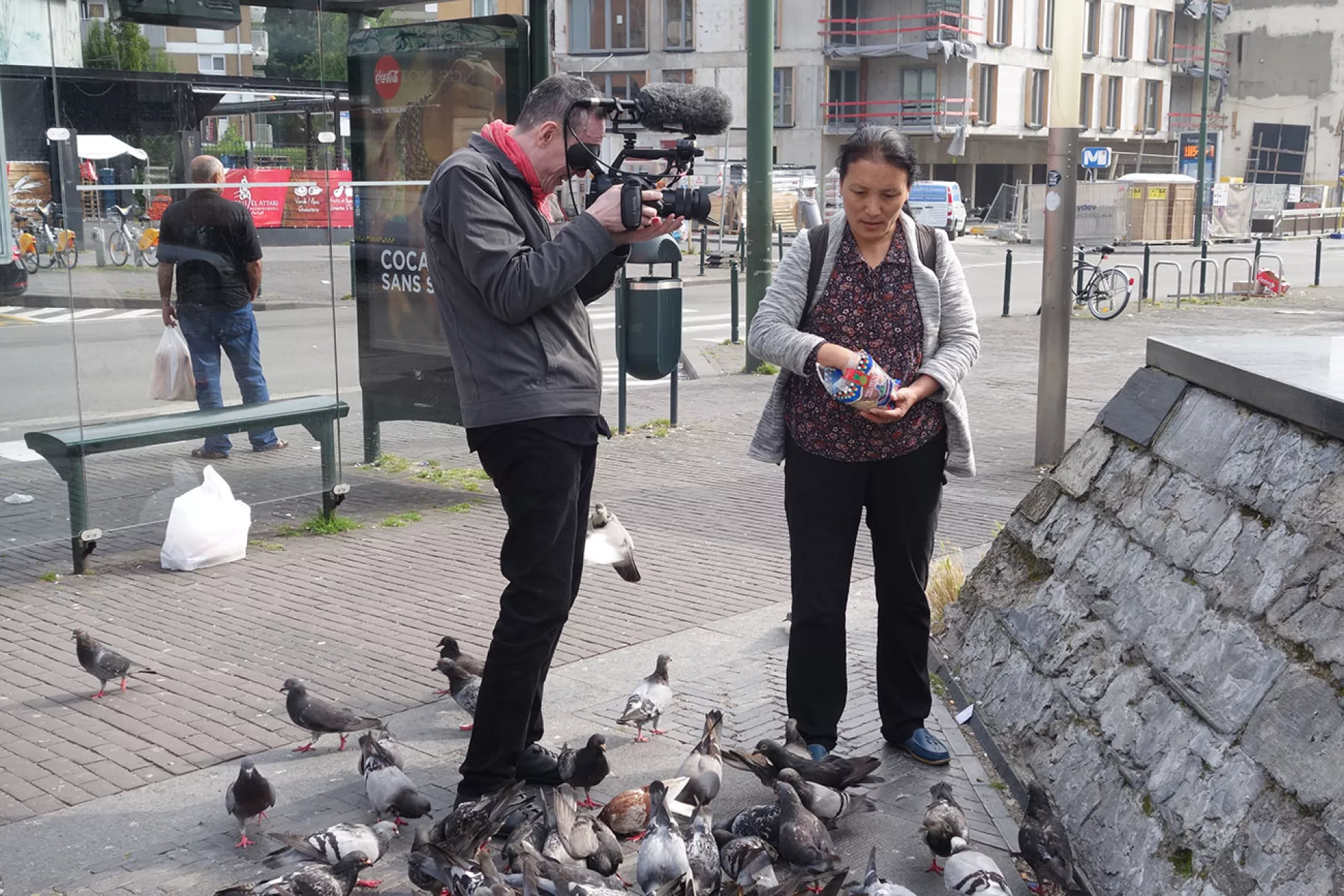
Madonna Staunton’s artistic practice spans five decades, with her paintings and sculptures delving into the complexities of the human psyche and emotional structures. Her works emerge from personal landscapes, blending self-portraits, intuitive assemblages, and abstract expressions. Pieces such as Immigrant and Amputee reflect on alienation and violence, while her N.Y. 11 Sept 01 2001 monotypes respond to global unrest and loss. Staunton’s art speaks to vulnerability, highlighting the body’s fragility in times of conflict and upheaval, inviting reflection on how personal experience intersects with larger societal forces.

Ho Tzu Nyen’s NO MAN II envisions a spectral choir of beings from across history and myth. These figures, ranging from animals to cyborgs, engage in unpredictable movements that challenge traditional notions of identity. Their collective performance, underscored by John Donne’s poem For Whom the Bell Tolls, underscores humanity’s interconnectedness. Through this work, Ho probes the ambiguity of existence, contemplating the tension between individual and collective identities. The figures’ rhythmical utterances and uneasy choreography convey a plea that transcends boundaries, urging a reconsideration of how humanity defines itself and its relationship to the world.
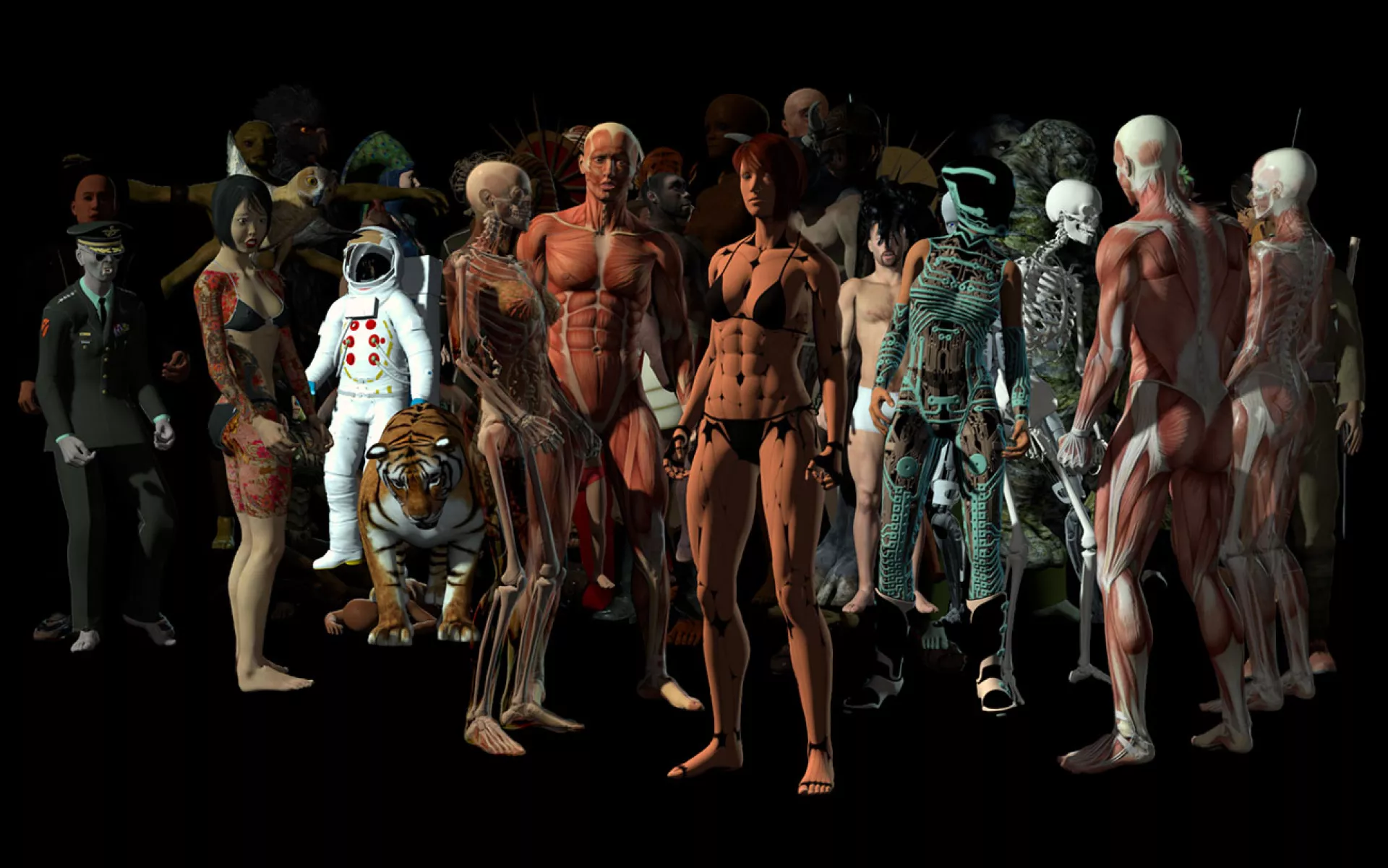
Ana Torfs’ work focuses on the interaction between text and image, highlighting the processes of visualization, interpretation, and translation. She seeks to reveal a nuanced perception of fragmented cultural and political histories through installations combining media like photography, video, sound, and more. Her 2005 research at the DAAD residency centered on the trial records of the murder of Karl Liebknecht and Rosa Luxemburg. From these testimonies, Torfs crafted a multimedia script, creating a shifting portrayal of their final moments, while questioning the divide between fact and fiction, and the role of language in shaping narratives.
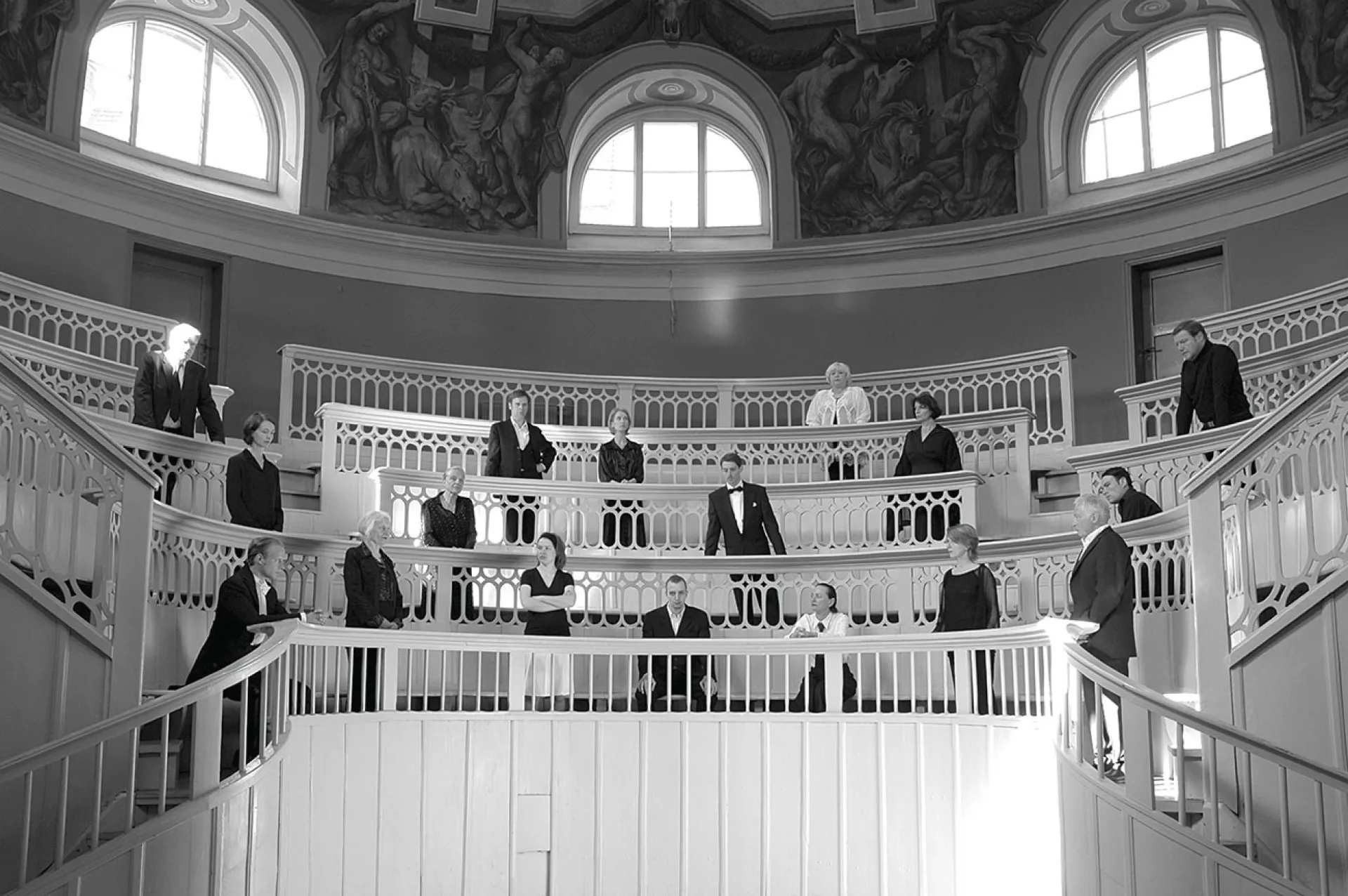
ALDERMAN'S HOUSE
The Alderman's House, built in the 13th century, is Belgium's oldest surviving stone city hall. With Gothic additions in the 14th century, it played a key role in regional governance and justice, housing the Great Council until 1616. It features historic wall paintings and has served various purposes, now hosting the Contour Biennale.
ARTISTS & WORKS
Agency, a Brussels-based initiative founded in 1992 by Kobe Matthys (1970-2023), researched the intersection of art and the non-human. It challenged the separation between nature and culture, focusing on how non-humans (animals, plants, etc.) and other-than-humans (spirits, extraterrestrials, etc.) are excluded from intellectual property laws. For Contour Biennale 8, Agency presented two controversial cases: Naruto’s selfies, taken by a macaque, and a spirit drawing by psychic artist Frank Leah. These are explored through gatherings that re-examine the hesitation in legal judgments and address the consequences of intellectual property on an inclusive ecology of art practices.
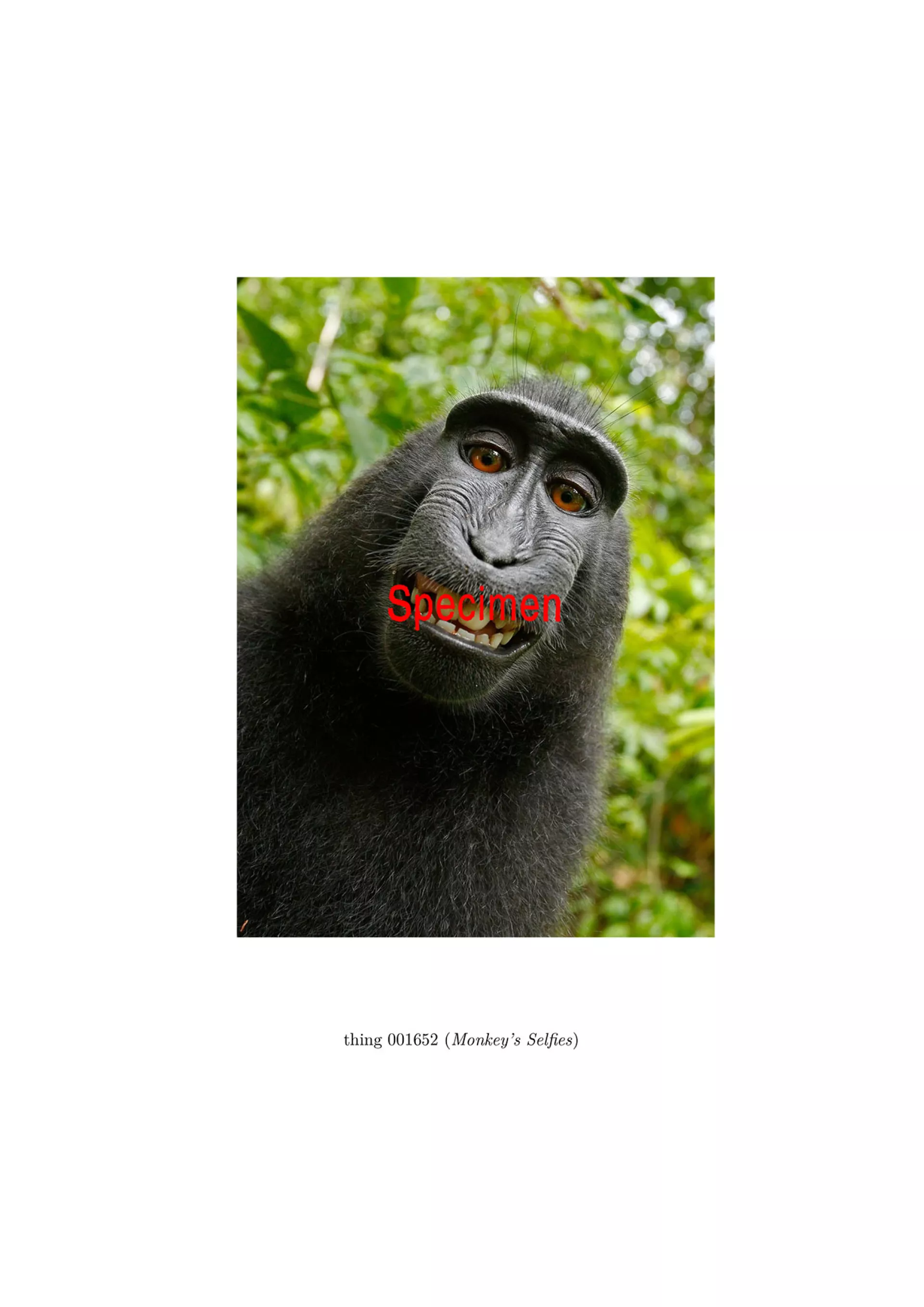
Cooking Sections, a London-based duo, created The Empire Remains Shop as a critical exploration of the British Empire's legacy through food. Inspired by 1920s Empire Shops that aimed to teach consumption of colonial products, this installation speculates on selling remnants of the Empire in contemporary London. Beginning in 2013, the project investigates cultural exchanges, colonial trade, and the invention of “exotic” foods. For Contour Biennale 8, the installation featured Empire Marketing Board posters and a franchise agreement, encouraging public institutions in Belgium to open their own Empire Remains Shops, further examining postcolonial geographies and ecological concerns.
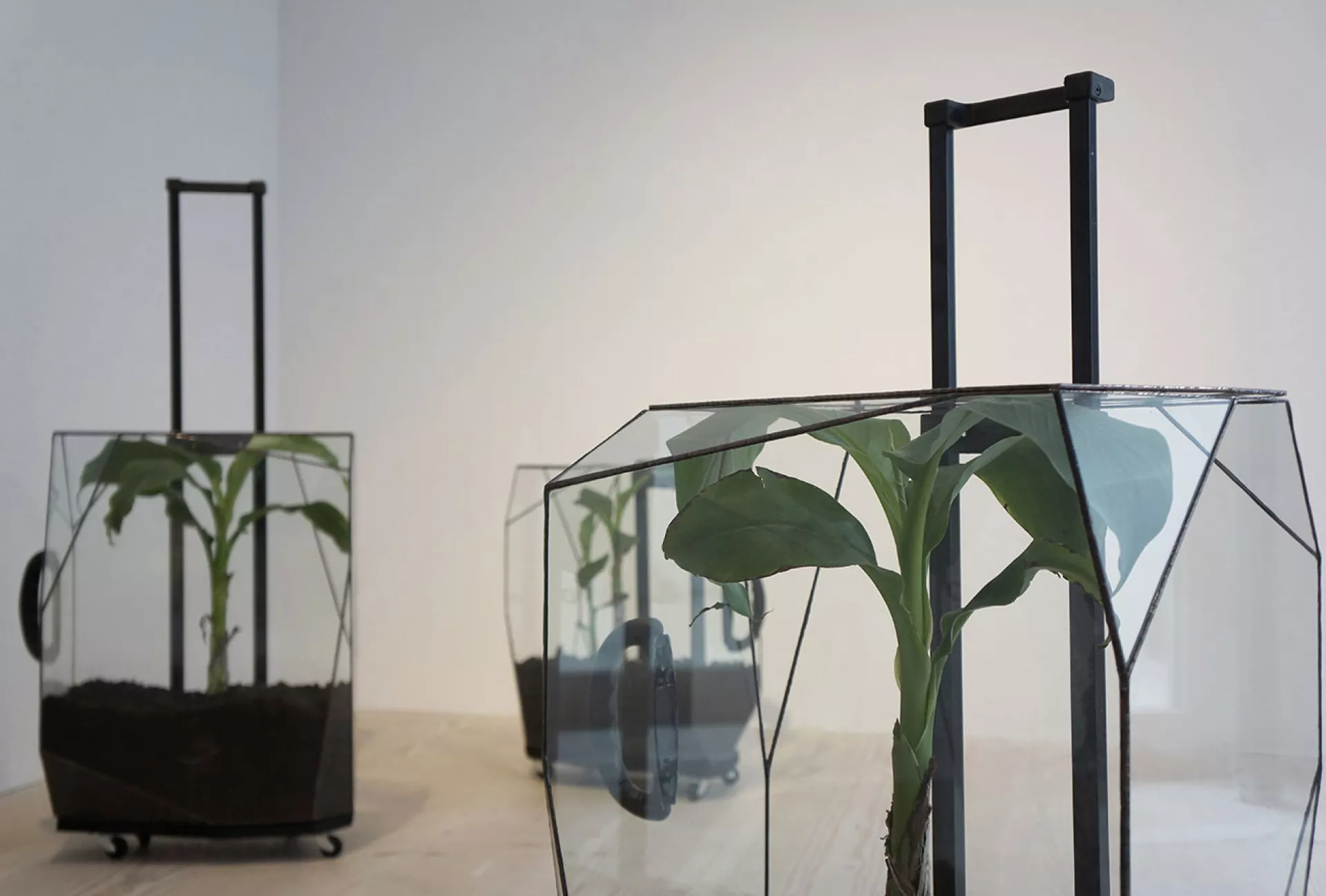
Rana Hamadeh’s artistic practice investigates justice, militarism, sanitation, and theater through curatorial, discursive projects. Her ongoing project Alien Encounters complicates the notion of “alienness” through performances, installations, and writings, using the “alien” to examine state violence and legal systems. For Contour Biennale 8, she presented The Ten Murders of Josephine, an opera in progress that questions the concept of the testimonial subject. This work challenges the boundaries of law and theater, where justice becomes a means to an end, and the unspeakable finds expression beyond the courtroom.
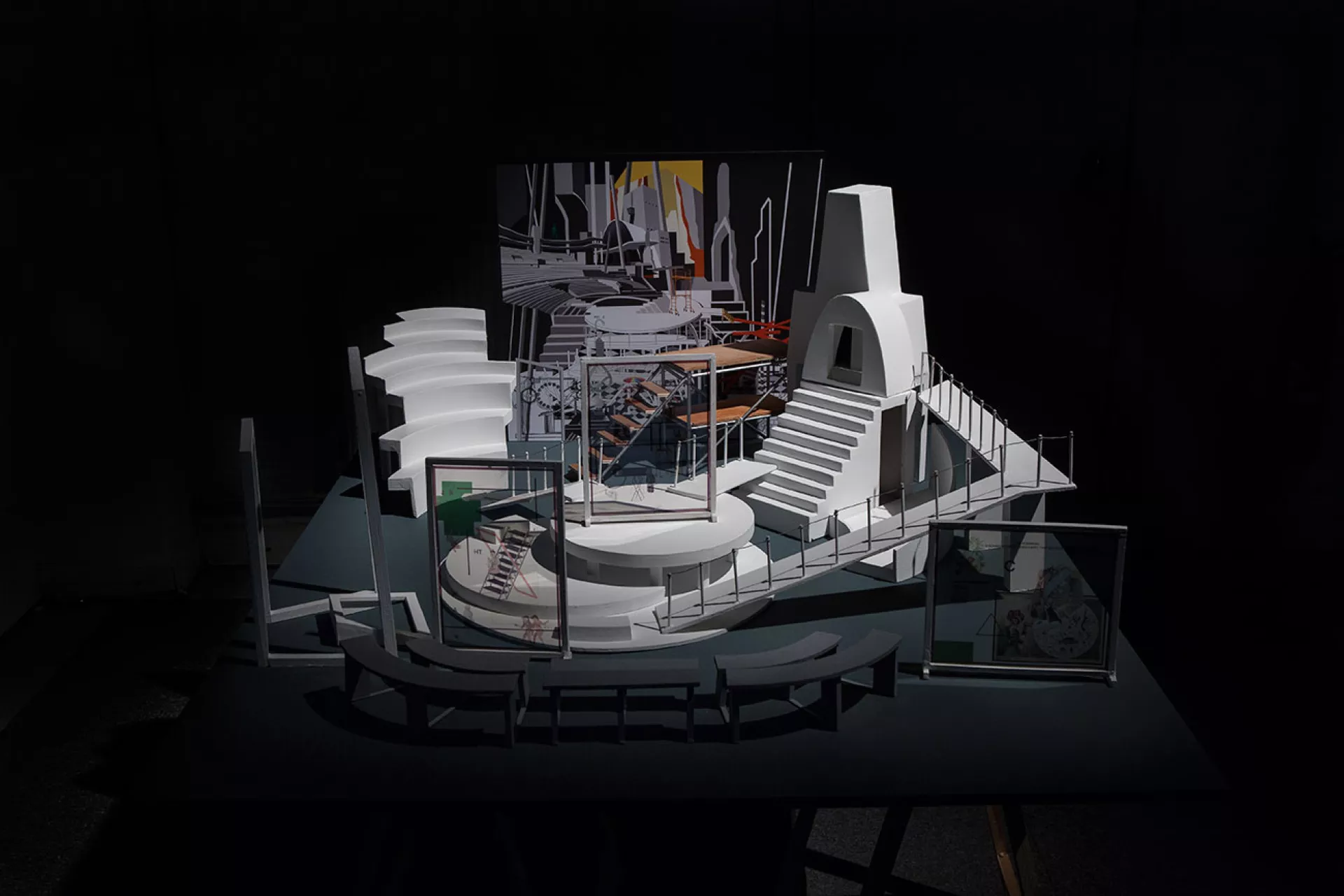
Otobong Nkanga’s work explores the transition of nature into commodity and modernity through visual and performative storytelling. She focuses on the poetics of stone, minerals, and their impact on power dynamics, deep extraction, and human bodies as fragmented landscapes. Her pieces, like Reflections of the raw green crown (2014) and Tsumeb Fragments (2015), examine historical memory and industrial extraction, particularly referencing the Tsumeb mine in Namibia. Nkanga intertwines Nigerian Pidgin English and engages with the themes of land, memory, and the tension between human bodies and natural resources.
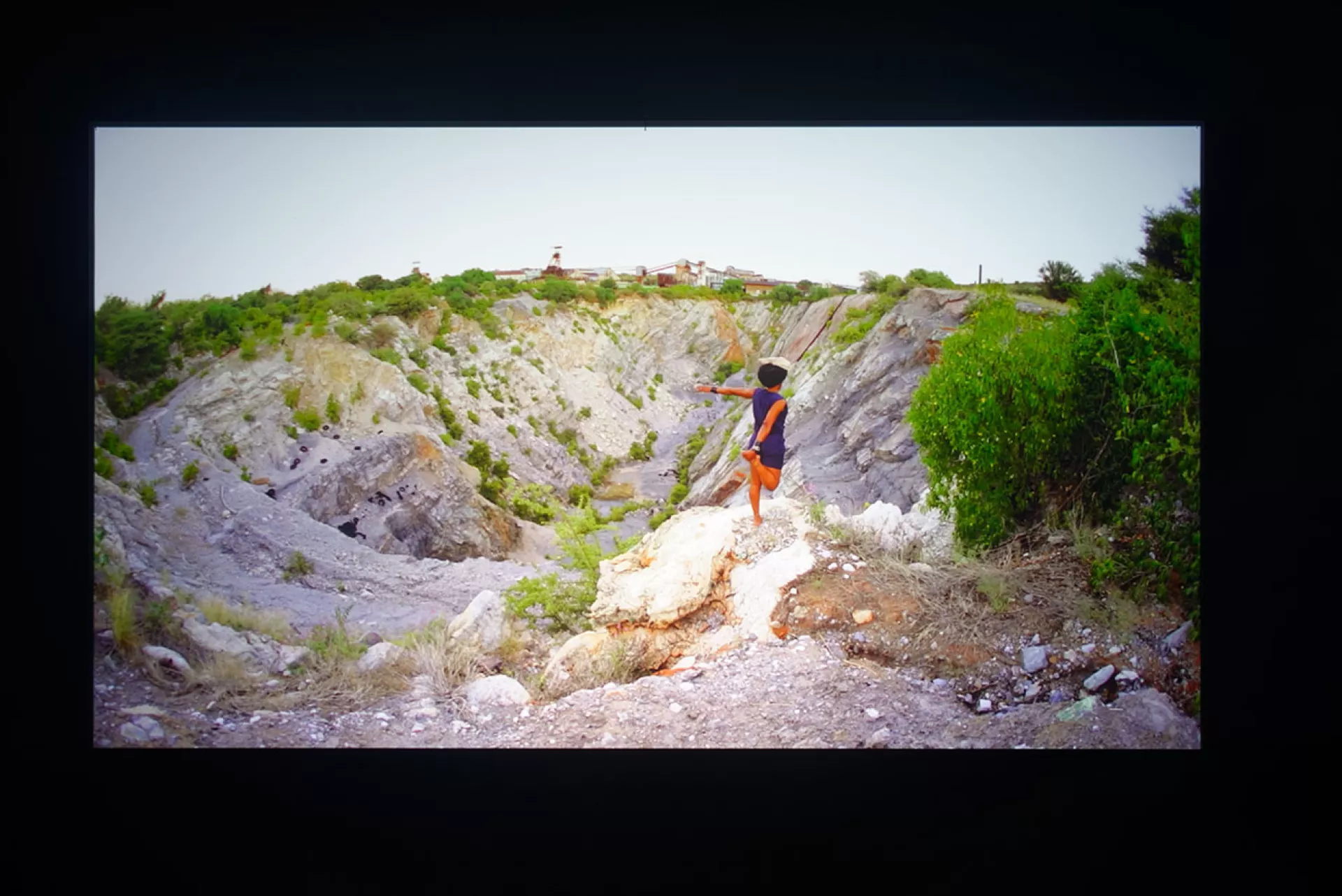
Judy Radul's work contrasts two types of windows at the Alderman's House: old leaded glass and a modern plate-glass window, reflecting changing notions of clarity and transparency. A video camera and machine system turn pages of a publication addressing evidence production and judgment. Incorporating eye tracking, the work explores how images are seen, inviting contemplation of testimony, perception, and evidence in both the present and future. Radul raises questions about the evolving role of vision, media, and surveillance, without providing definitive answers, but rather encouraging viewers to engage with the act of watching and witnessing
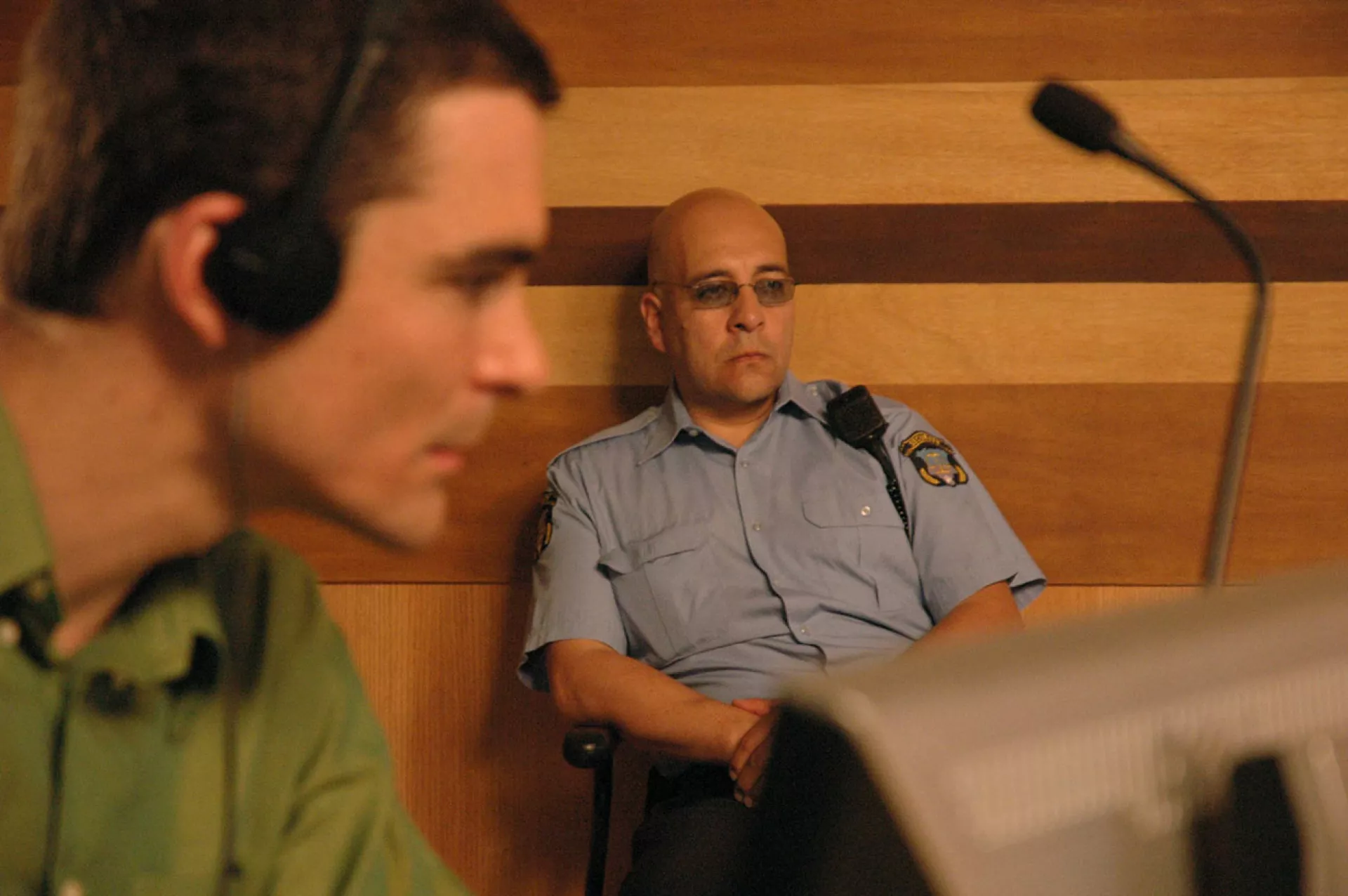
Trinh Thi Nguyen’s work with moving images involves revealing hidden structures in sound, images, texts, and materials, while resisting the power of representation. Vietnam the Movie (2016) examines how “Vietnam” is portrayed internationally, particularly in the context of the Vietnam War. By recycling footage, Nguyen deconstructs media aesthetics and narratives, reengaging with history. The film challenges the linearity of history and offers a fragmented, shifting perspective, inviting a reconsideration of the nation's legacy through the lens of popular media and the gaps in its portrayal across fifty years.
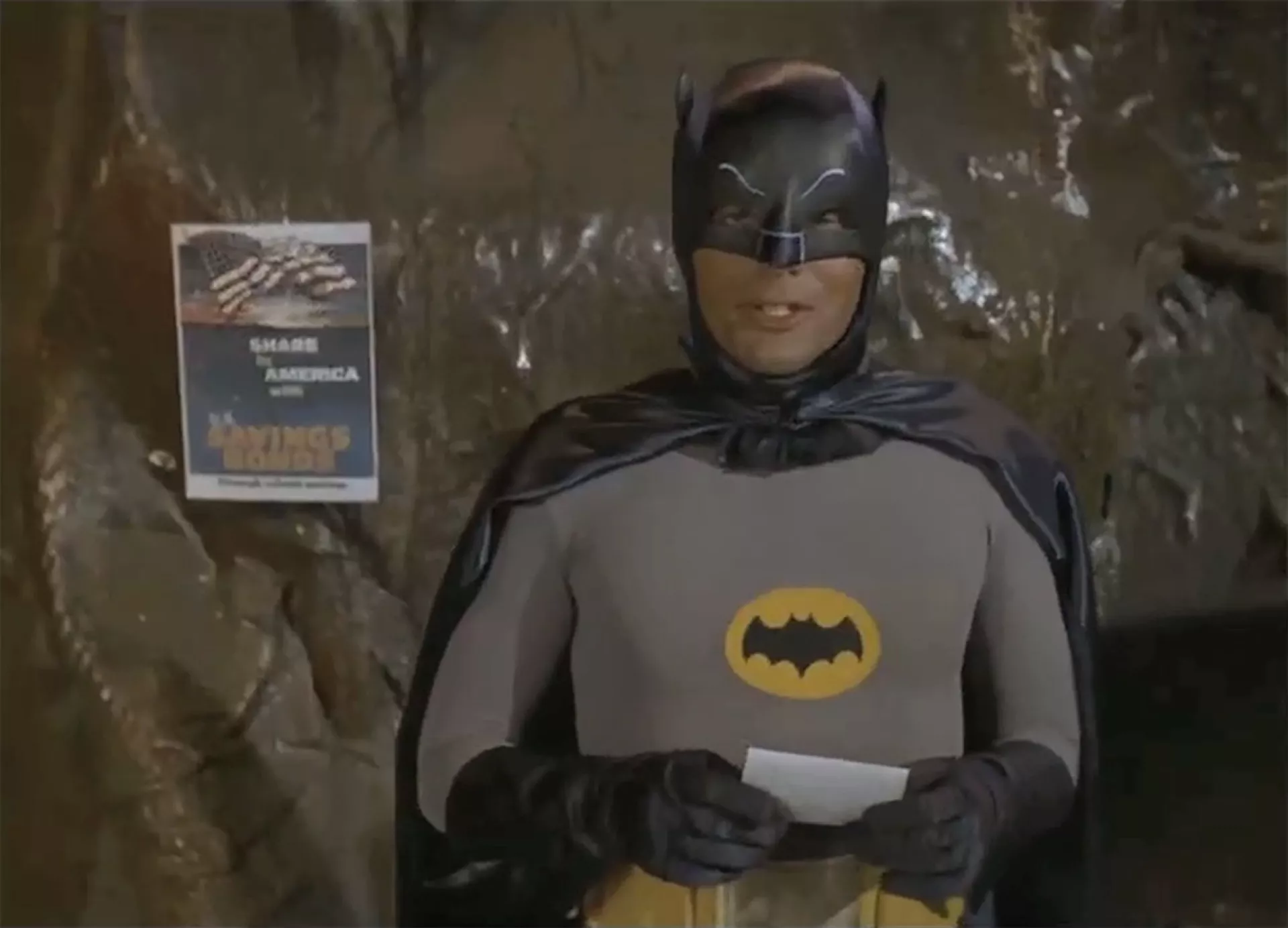
THE HOUSE OF THE GREAT SALMON
The House of the Great Salmon, a prime example of early Renaissance architecture, highlights Mechelen's historical connection to waterways, trade, and mercantile transport. Contour Biennale 8 explores links to neoliberal settler states and extractive commerce. The building, once owned by a leper monastery, features a golden salmon symbolizing Flemish guild wealth.
Pedro Gómez-Egaña’s work focuses on creating intimacy with places, exploring their historical and sensory experiences. Through studies of acoustics, kinetics, and minute site characteristics, he combines mechanistic apparatus with human involvement in staging scenes. In The Moon Will Teach You (2017), inspired by Flemish Renaissance riddles and early printing traditions, he investigates linguistic silence and mechanical darkness. Presented in the attic of the House of the Great Salmon, the work explores how printing presses’ movements and the enigmatic nature of texts engage the audience, inviting them into an immersive environment where proximity and distance are constantly redefined.
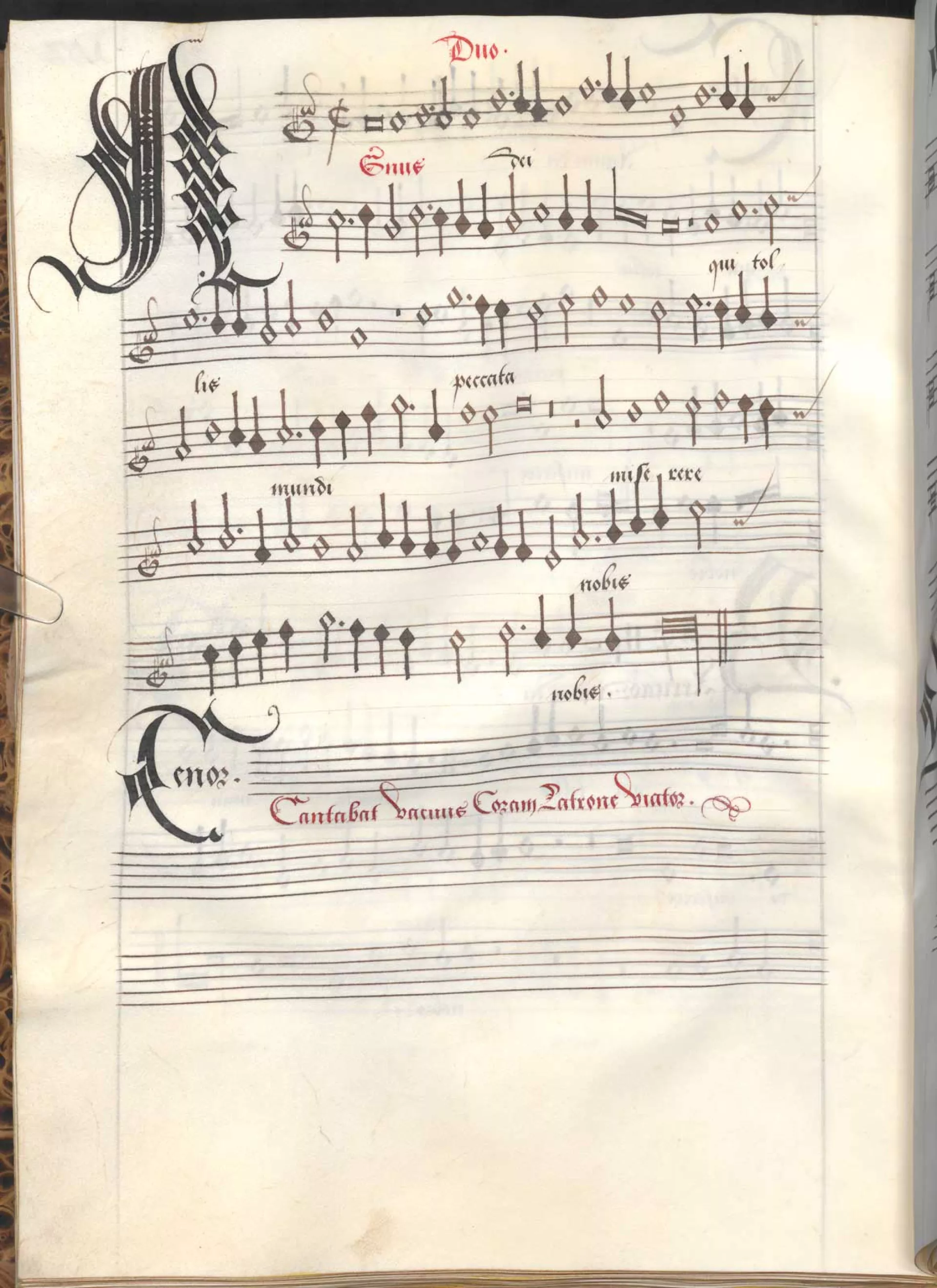
The Karrabing Film Collective's The Stealing Cnt$* (2017) examines theft, survival, and toxic sovereignty in northern Indigenous Australia. The work includes Windjarrameru, a film about four Indigenous men accused of stealing beer near a sacred site and fleeing into a contaminated swamp. Complementary works such as Law Wall, Toxic Sovereignty #5, and Can You Brighten Yourselves? explore the legal, historical, and material realities of Indigenous life under colonialism, addressing issues like ancestral law, dispossession, racial barriers, and the effects of neoliberal policies on Indigenous communities.

COURT OF SAVOYE
The sixteenth-century Renaissance site, once the Palace of Margaret of Austria, now houses the lower courts. Margaret, a patron of the arts, hosted Renaissance figures like Erasmus and Dürer. The site’s façade features a Justitia sculpture. For Contour Biennale 8, artists will utilize the throne room and baroque garden.
ARTISTS & WORK
Lawrence Abu Hamdan's The Recovered Manifesto of Wissam takes an unconventional recording technique in Lebanon’s Chouf Mountains, where cassette tape is used to protect clementine trees. After discovering a tree with mini-cassette tape, Abu Hamdan salvaged fragments of a voice, later identified as Wissam, which revealed an audio manuscript on the Islamic concept of Taqiyya—allowing one to lie for self-preservation. The project involved painstaking recovery of muffled audio over hours, with ninety minutes of salvageable fragments presented at the Mechelen law courts, reflecting the arduous task of recovering lost voices and hidden knowledge.
Eric Baudelaire’s Also Known as Jihadi (2017) tracks the journey of a young man from France to Syria and back, where he is imprisoned for allegedly joining Daesh. Using landscape theory, the film portrays the character’s path to radicalism through a series of location-based shots, exploring how these environments reflect social and political structures. The film, inspired by real events, questions the process of alienation and return. Baudelaire aims to provoke understanding and confusion simultaneously, offering a subtle sympathy for a shared human condition, without simplifying the complexity of radicalization or monstrosity.
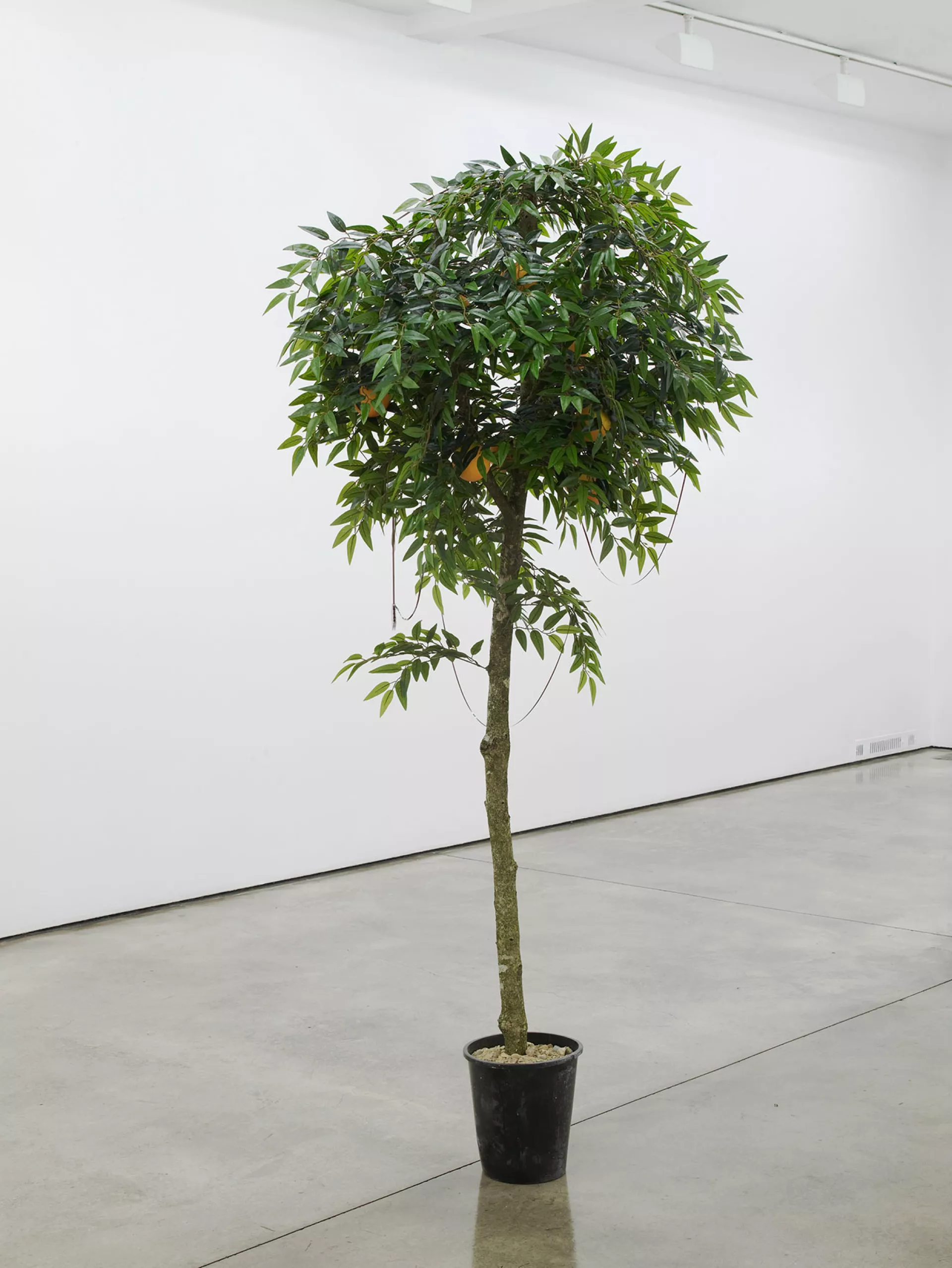
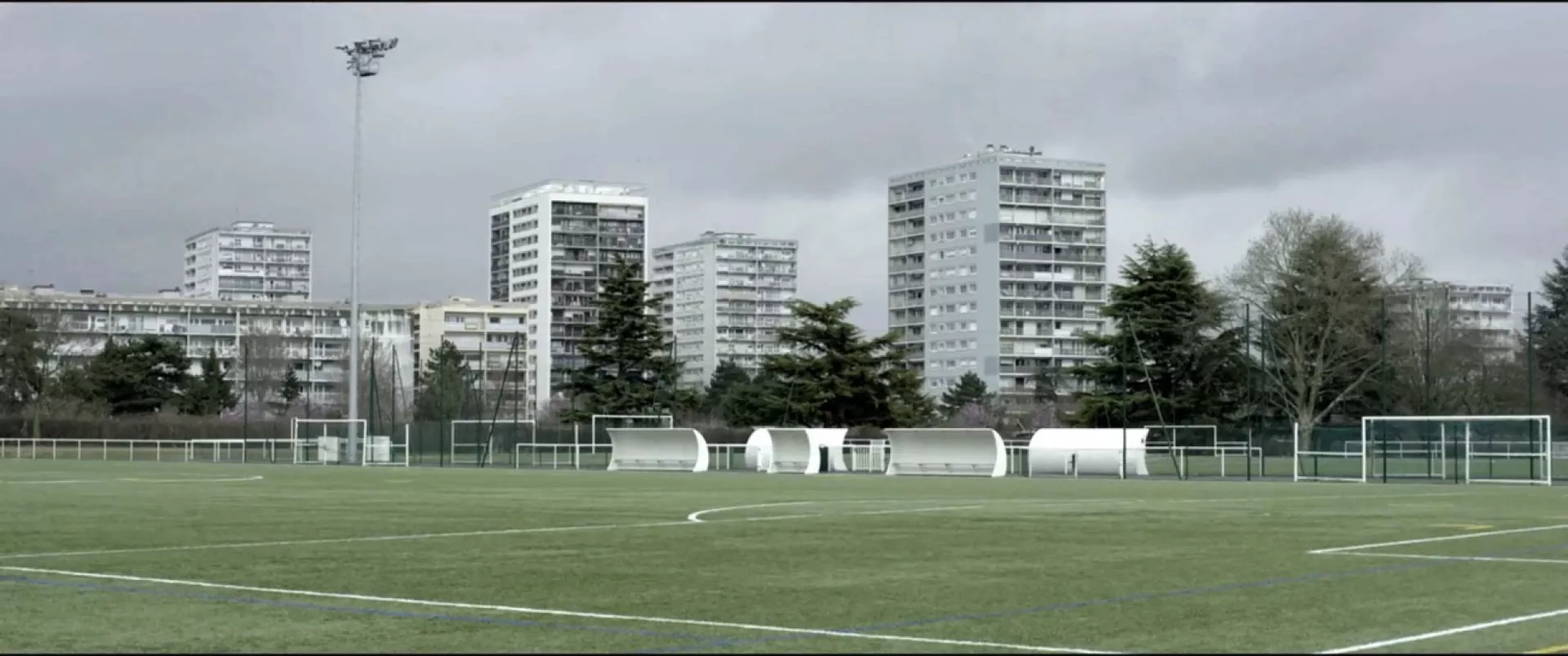
HOUSE DE CLIPPEL
The House De Clippel, a fifteenth-century manor known as "The Empress," has hosted Dutch nobility and served as a hotel and wine merchant. Owned by the Michiels family since 1890, renowned watchmakers, it houses Luc Michiels' workshop. For Contour Biennale 8, its wine cellar transforms into an oceanic zone for environmental justice.
ARTIST & WORK
Susanne M. Winterling's multipart installation Glistening Troubles (2017) explores ecological solidarity and the toxic, collaborative growth patterns of life forms. Combining CGI, sculptural works, and sound composition, the project focuses on bioluminescence, algae varieties, and the impact of the Capitolocene on ecosystems. Drawing on field research in the Caribbean and collaborations with local communities and scientists, it examines indigenous knowledge and non-Western environmental models. The work blends biology, ecology, social theory, and avant-garde science fiction, challenging human-centered narratives and advocating for interspecies solidarity. Presented at Contour Biennale 8, the installation shifts the experience of its underground venue.
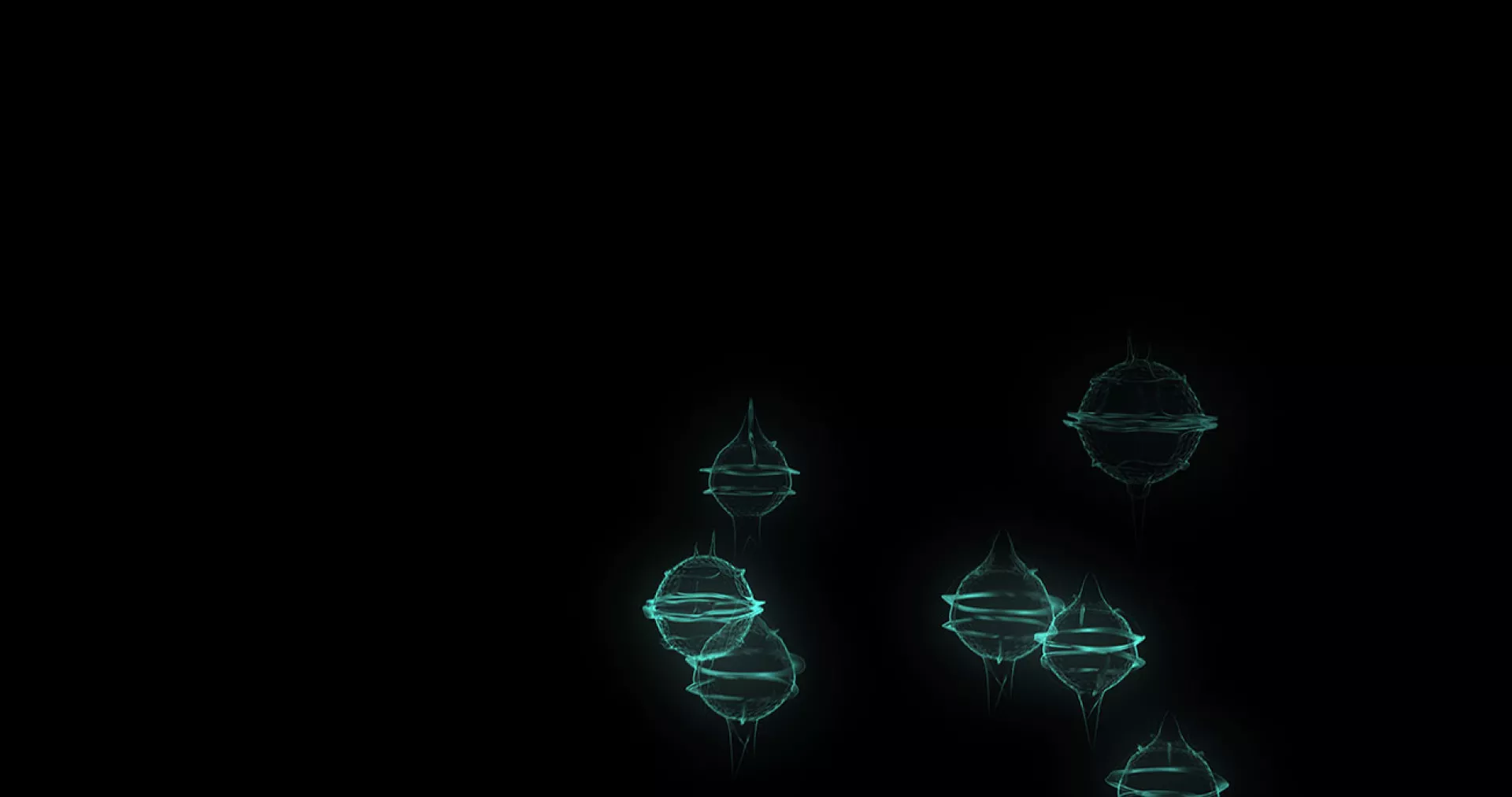
WAREHOUSE EN CO-WORKING SPACE
The closing venue of Contour Biennale 8, located at Battelsesteenweg 50, is a former furniture factory now hosting a carpentry workshop, cycle shop, experimental theater, and the ROJM youth center. The biennial showcases works exploring informal labor, postindustrial narratives, and self-governance, resonating with the site's multifaceted history.
ARTISTS & WORKS
The film Sunstone (2017) and installation Refracted Spaces (2017) by Filipa César & Louis Henderson, based on ongoing research, critically examine optical technologies used in military and colonial contexts, such as Fresnel lenses and satellite navigation systems. The artists explore how these tools of guidance and surveillance are shaped by and reinforce Western models of knowledge, linking concepts of sight, understanding, and imperialism. The film tracks Fresnel lenses from production to museum exhibitions, contrasting historical and political contexts, such as colonial trade and post-revolutionary Cuba’s Op art. Through a blend of 16mm film, digital media, and 3D CGI, the work reflects on technological advancements in optics and their implications. The accompanying installation includes archival materials like oceanic charts and lens fragments, with the artists engaging the public through talks and workshops to further develop the project.
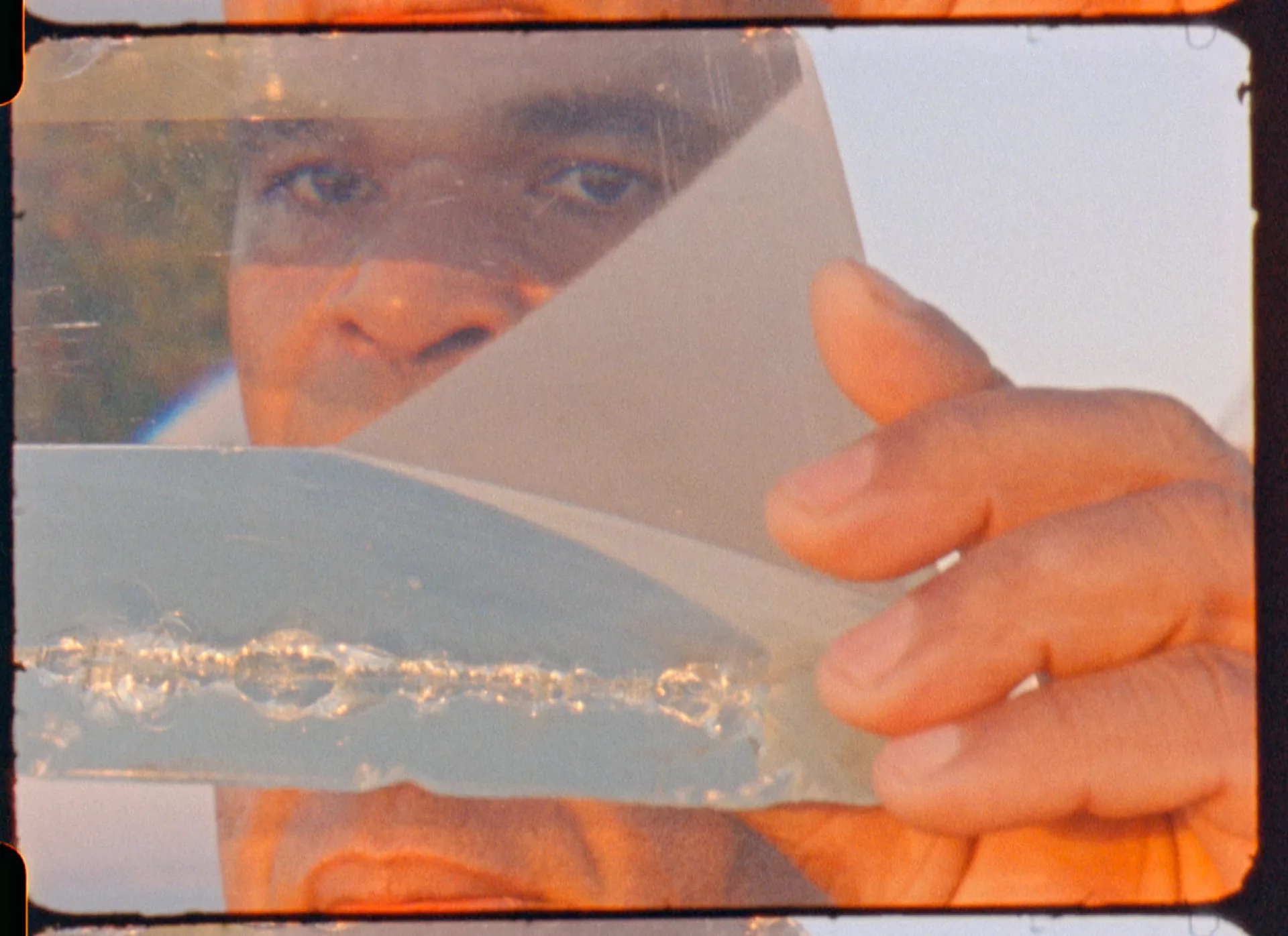
Adelita Husni-Bey's artistic practice explores pedagogical frameworks inspired by anarco-collectivist studies, aiming to challenge the concept of collective identity. Her work emphasizes anti-imperialist, feminist, and queer struggles while analyzing class constructs. Agency (2014) emerged from a workshop with students at Manara High School in Rome, where participants engaged in role-playing, representing journalists, activists, bankers, workers, and politicians. Over three days at the Maxxi Museum, the students examined power dynamics, generating interrelations between roles. The workshop featured debates on societal conditions and the meaning of power, providing insight into the intersections of contemporary Italian sociopolitical landscapes.
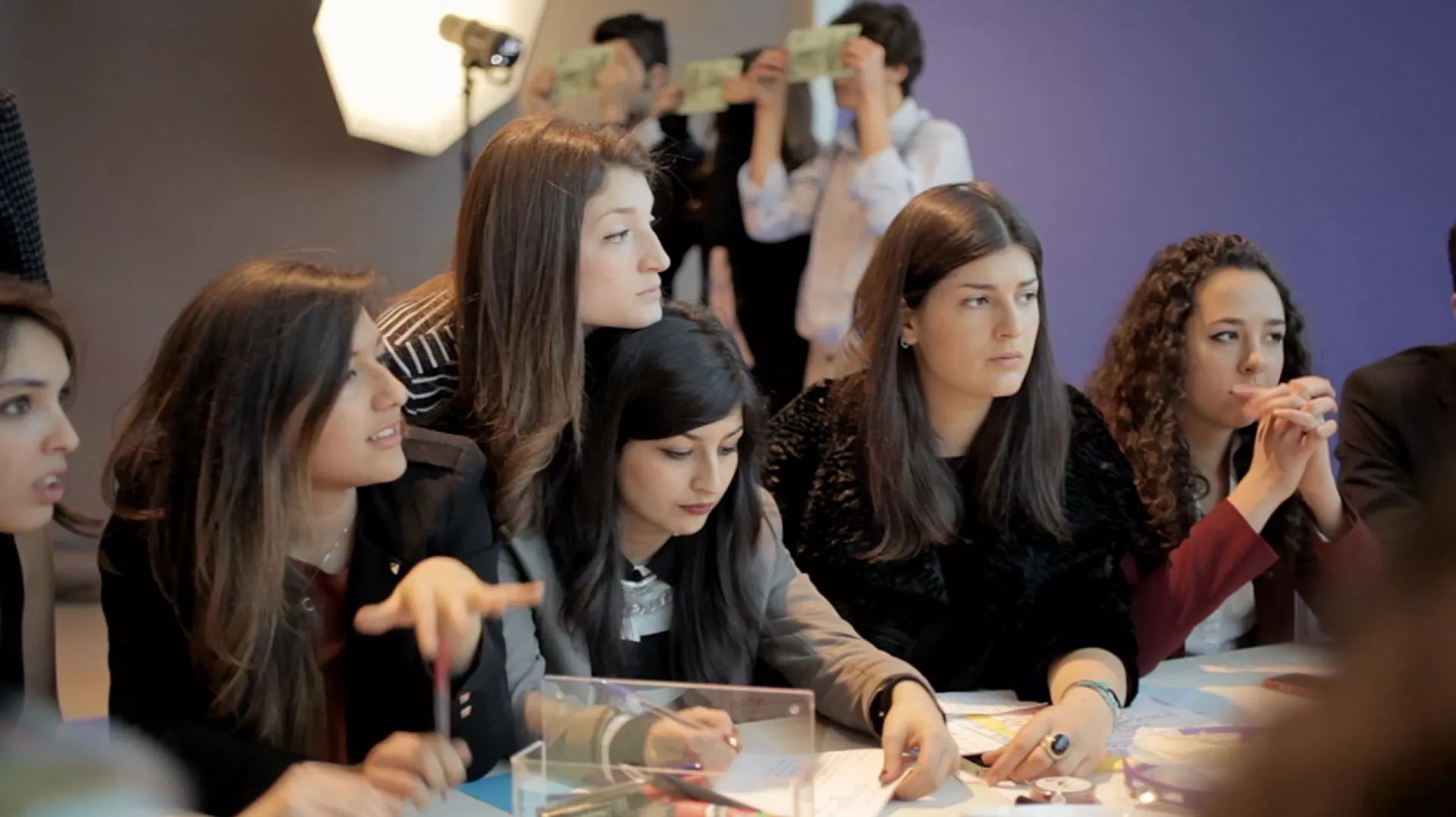
Basir Mahmood's work investigates his role as an artist through multiple identities: author, initiator, observer, and withdrawn subject. In Monument of Arrival and Return (2016) for Contour Biennale 8, he positioned himself as a dramaturge, setting up scenes with railway porters ("coolies") who improvised with everyday objects. Mahmood remotely produced the film in Lahore, Pakistan, through sketches and narrative instructions, reflecting on the historical and ongoing movement of indentured laborers, paralleling the current experience of porters at Lahore’s railway station.
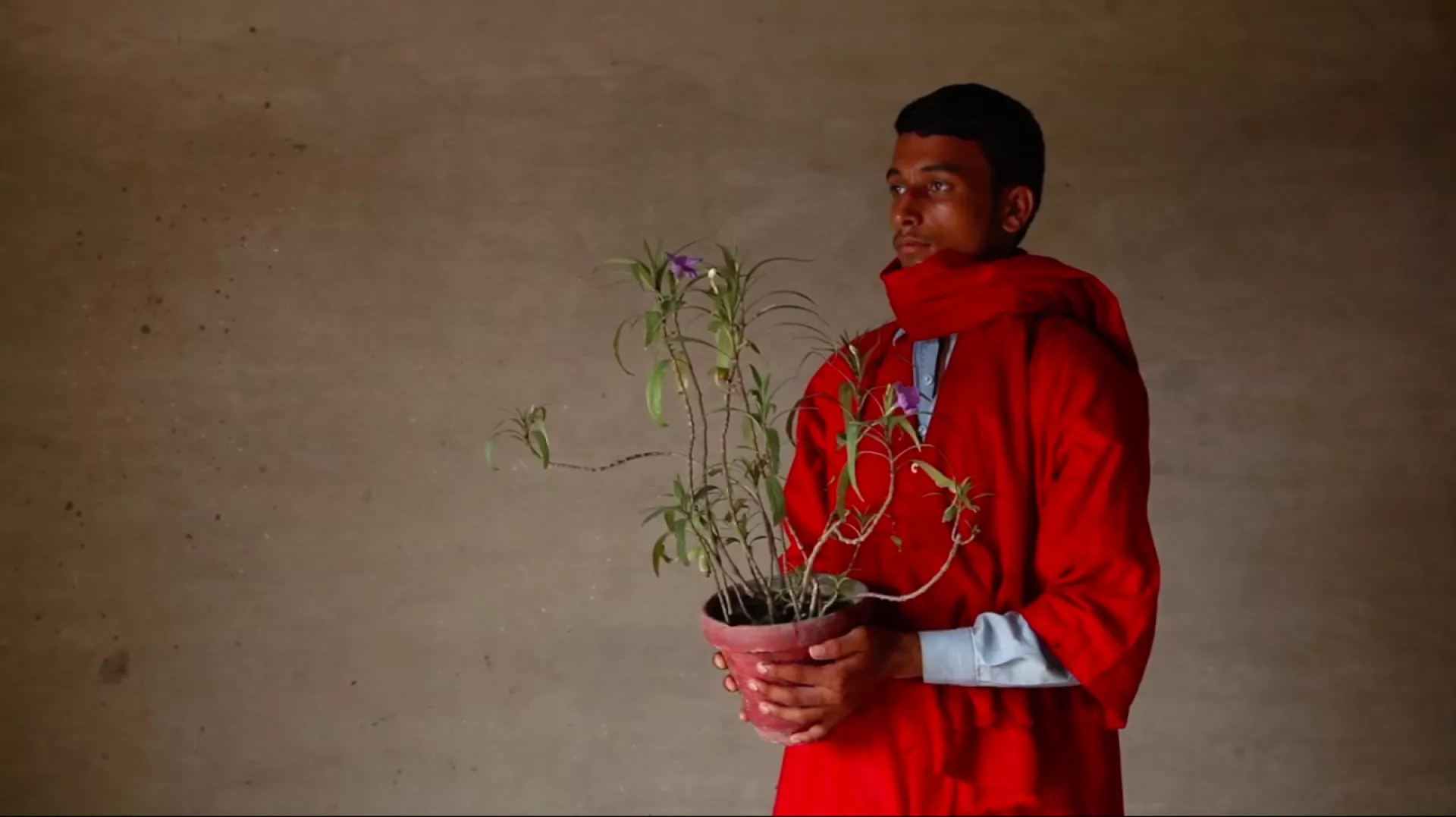
Pallavi Paul's work considers the intersection of poetry, time travel, and the malleability of time, engaging with nonfiction material to create new possibilities. By disrupting the divide between "reality images" and "documentary," she aims to develop a space for fantasy, resistance, politics, and history. The Dreams of Cynthia (2017) follows a protagonist whose identity existed as a literary figure, a measure of time, and a landscape, while also witnessing the intertwined lives of an executioner and a trans artist in a small town in North India. Through this, Paul seeks to transcend historical mourning, offering a playful, critical lens on contemporary chaos.
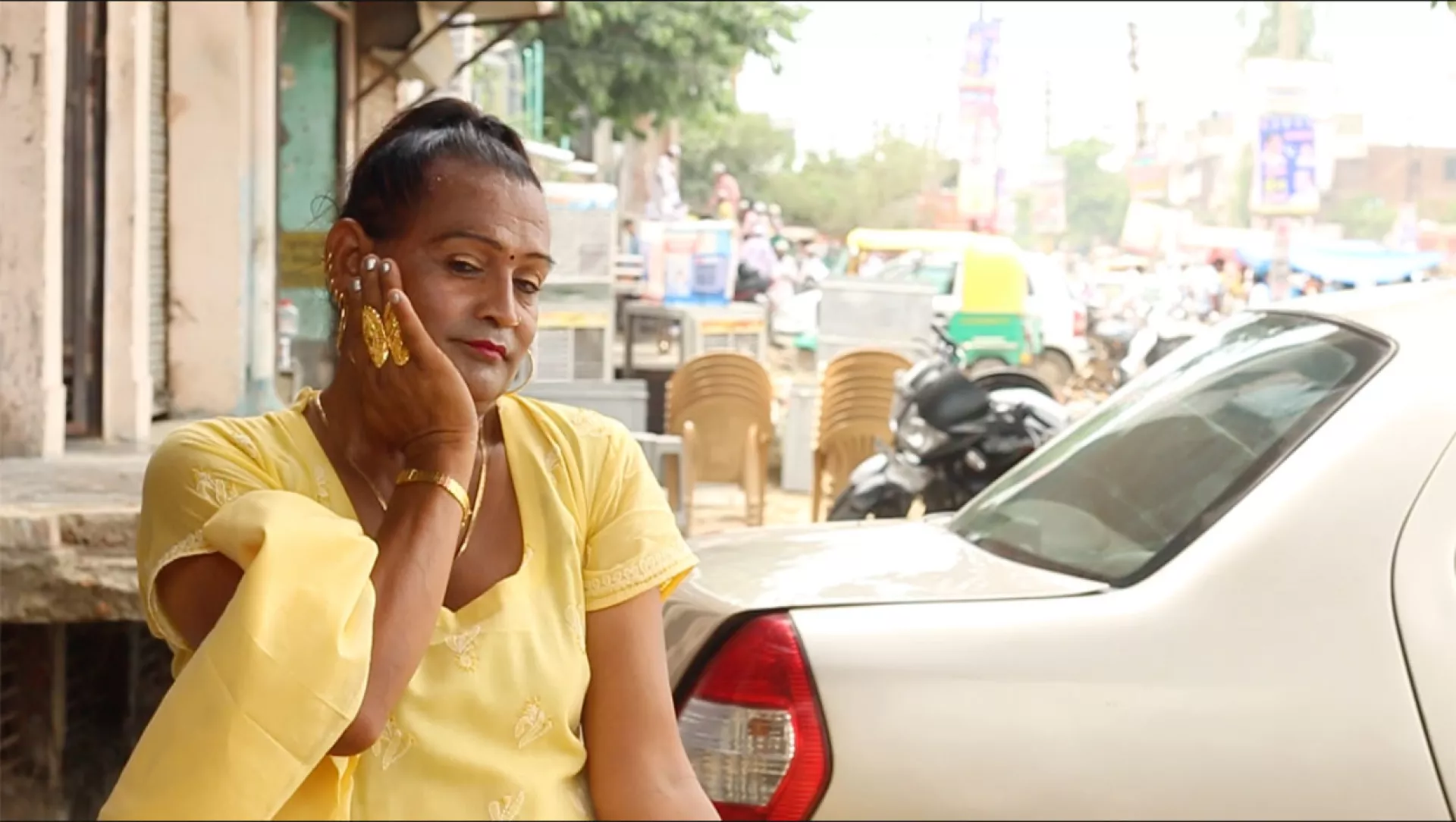
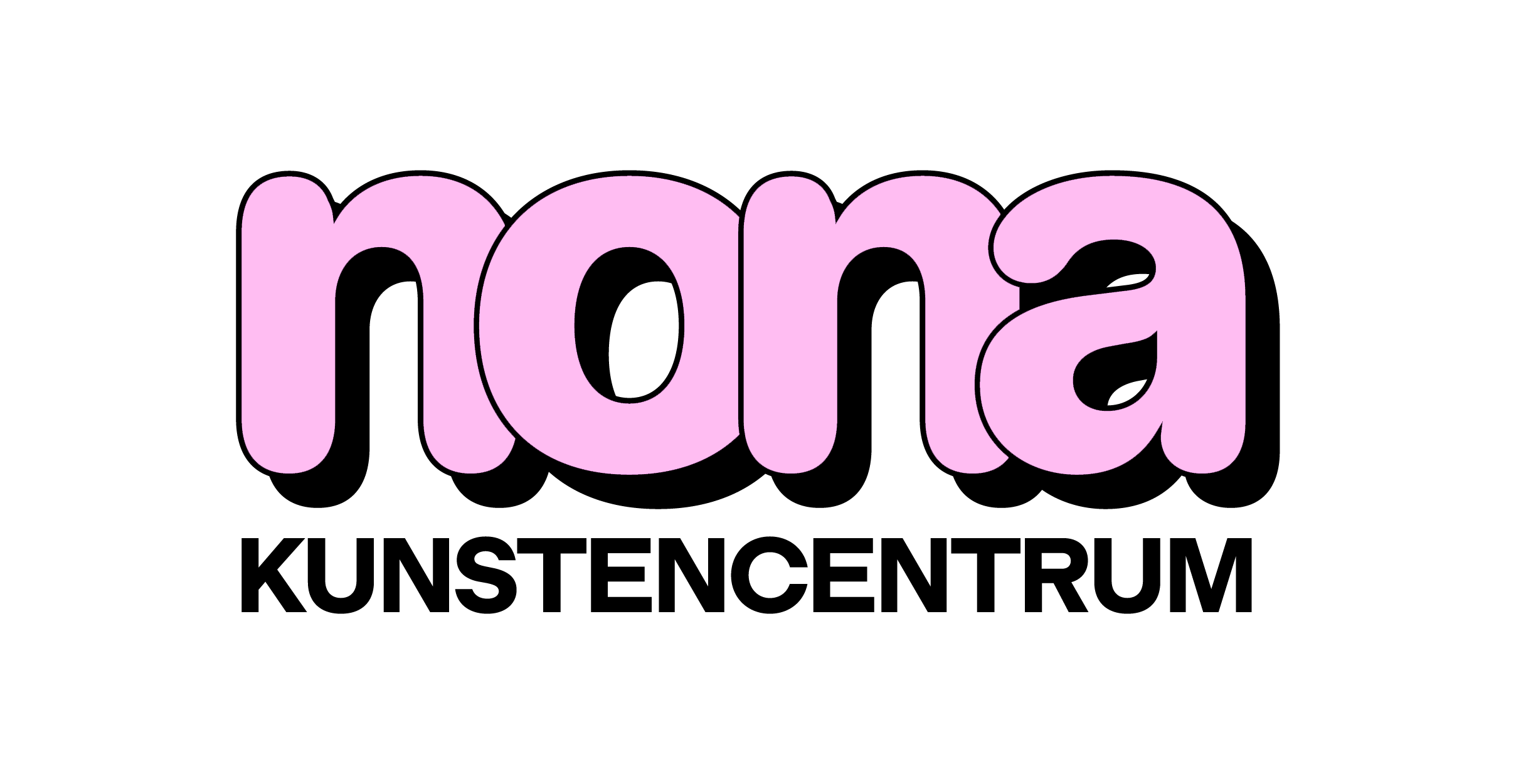


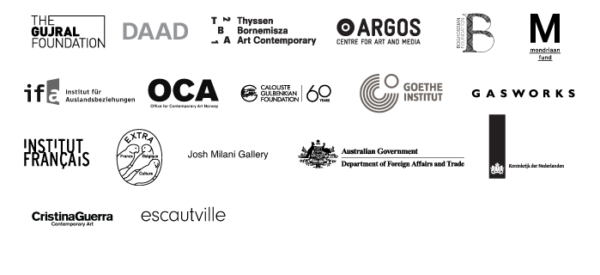




Contour Biennale 8 is organised by kunstencentrum nona.
Coproduced by OP.RECHT.MECHELEN. / Stadsfestival 2016-2018
With the support of Flemish Governement and City of Mechelen's
Cultural Partners: The Gujral Foundation, DAAD, Thyssen Bornemisza Art Contemporary, ARGOS centre for art and media, Fondation Boghossian, Mondriaan Fund, IFA, OCA, Calouste Gulbenkian Foundation, Goethe Institut, Gaswords, Istitut Français, Josh Milani Gallery, Australian Government, Dutch Embassy, Cristina Guerra Contemporary Art, Escautville
Logistic partners: Martin’s Paterhof, Cultuurcentrum Mechelen, BOSQ, Sociaal Huis Mechelen, Duvel, Eidotech
Educational partners: DAI, Cera
Scientific partners: Mechelen Musea & Erfgoed, Alamire Foundation
Online media partner: Ibraaz
OP.RECHT.MECHELEN. partners: Nationale Loterij, Provincie Antwerpen, Wolters Kluwer, Willemen Groep, Klara, Knack, De Standaard.
